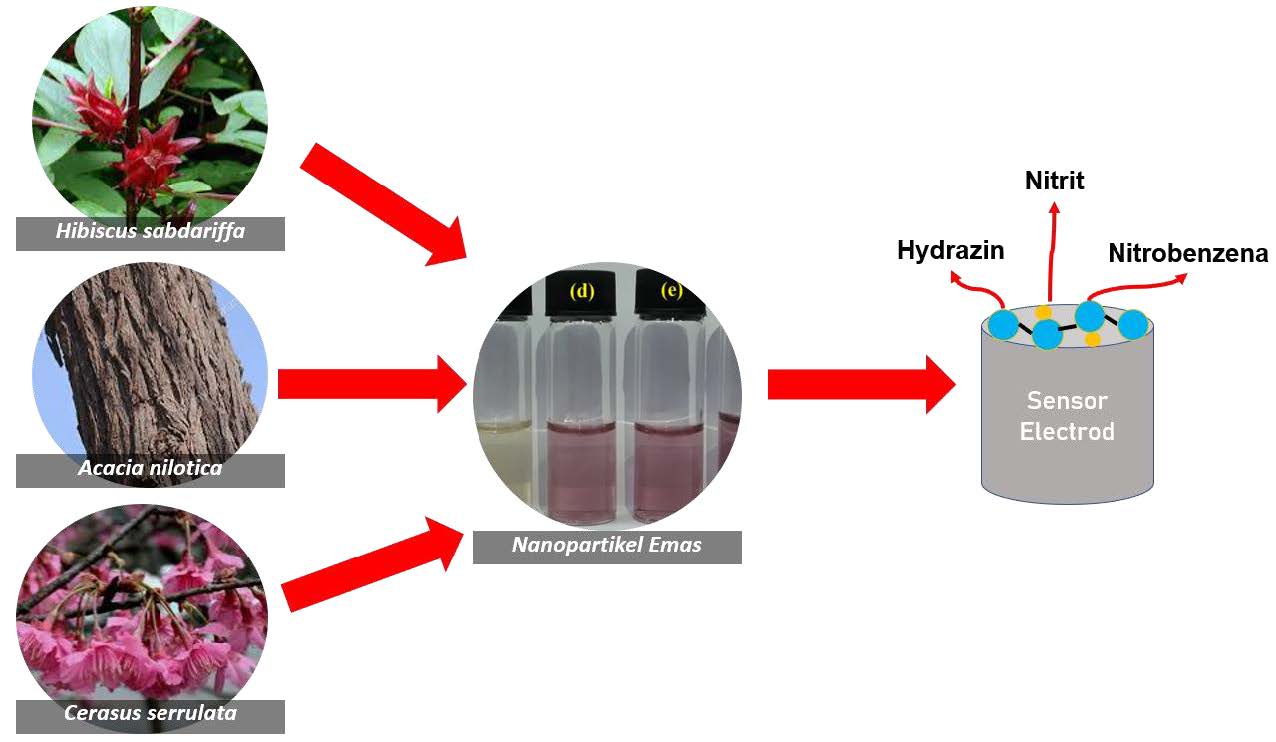Over the last decade, nanoparticles with a speciality in nanoscience and nanotechnology have been under active research and development in various fields such as sensors, catalysis, and medicine. What are nanoparticles? Generally, the nanoparticle is defined as a small particle that ranges between 1 to 100 nanometres in size, present in various shapes, and has its own physicochemical properties. Nanoparticles can be classified into different types according to the size, morphology, physical and chemical properties. Among them are carbon-based nanoparticles, ceramic nanoparticles, metal nanoparticles, metal oxide nanoparticles, semiconductor nanoparticles, polymeric nanoparticles, and lipid-based nanoparticles.
How nanoparticles are produced? The nanoparticle can be produced using two methods, namely “top-down” and “bottom-up” techniques. In the "top-down" method, nanoparticles are produced by reducing the size of large particles or bulk materials and can be obtained by methods such as chemical technique, laser ablation, mechanical milling, and sputtering. Whereas, in the "bottom-up" method, nanoparticles are produced by combining atoms or molecules, where the main reaction is reduction or oxidation. The “bottom-up” method includes nanosphere lithography, chemical, photochemical, electrochemical, and thermal reduction techniques.
Green synthesis is a “bottom-up” method that has been the latest trend in producing nanoparticles that can replace the conventional method (chemical and physical methods) with a less expensive and environmental friendly method. In addition, nanoparticles synthesized by conventional methods often have limitations in biosensor applications as they often use toxic solvents, producing toxic by-products, and imperfect surface structures. The process of green synthesis can often be produced using microorganisms (bacteria, yeast, fungi, and algae) or plant extracts. In contrast to microorganisms, plants are most widely used in the synthesis of nanoparticles. This is due to biomolecules in plant extracts which have shown to be good reducing and stabilizing agents. The stability of nanoparticles is very important in its application. Therefore, biomolecules in plants play an important role in the synthesis of nanoparticles.
A sensor is a device which receives data or information by detecting an event or changes in the environment of the real world and transferred the data in coded form into the computer to generate the desired output. Gold nanoparticles are some of the most extensively studied in biosensor applications among all metal nanoparticles because they can be readily conjugated with recognition moieties, such as antibodies on the surface of biomolecules for their detection. Gold nanoparticles provide excellent sensitivity for determining cancerous cells, blood glucose levels, bacteria, viruses, biological molecules, chemical compounds, pollutants, and pathogens.
In recent years much research is going on the green synthesis of nanoparticles and its sensing capability. A study from the Universiti Teknologi Malaysia has proved that sensors are modified with gold nanoparticles that synthesized using roselle extract (Hibiscus sabdariffa) enable to detect nitrate ions in the water which demonstrate higher sensitivity. In this study, Fourier Transform Infrared Spectroscopy (FTIR) and UV–visible spectroscopy (Uv-vis) were used and it was found that chlorogenic acid which is the main biomolecule present in roselle extract successfully conjugated with gold nanoparticles. This biomolecule acts as reducing and stabilizing agents in producing gold nanoparticles. The usage of green synthesis of nanoparticles in the sensors field is very interesting and needs to be further studied in order to expand future prospects.

Summary of green synthesis of gold nanoparticles for sensor applications.
By,
Siti Husnaa Mohd Taib
Universiti Teknologi Malaysia (UTM)
"1st runner up for the Science Article Writing Competition"
Date of Input: 16/11/2020 | Updated: 16/11/2020 | nursyahirah
MEDIA SHARING























